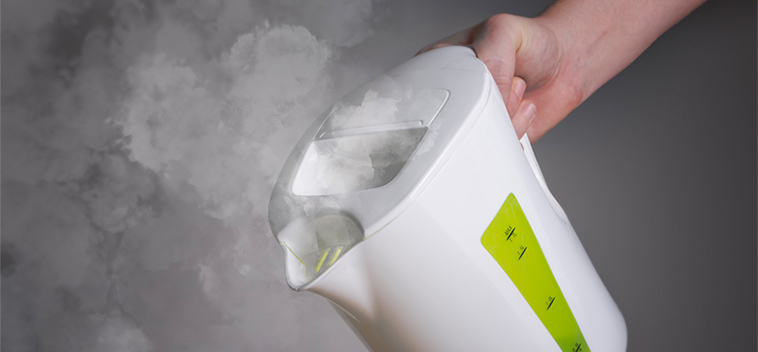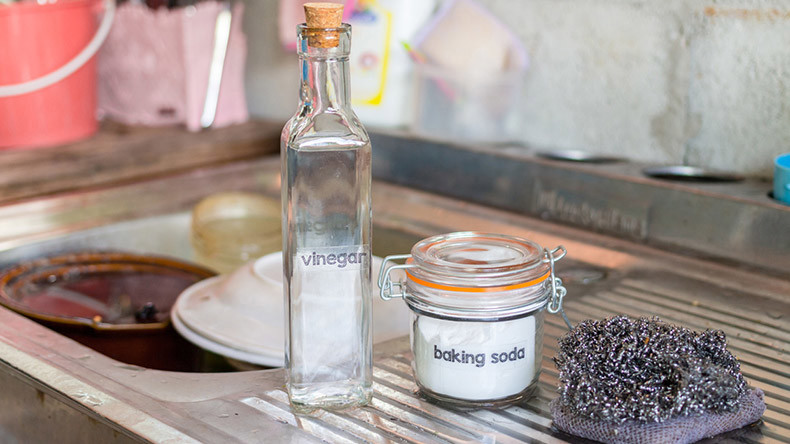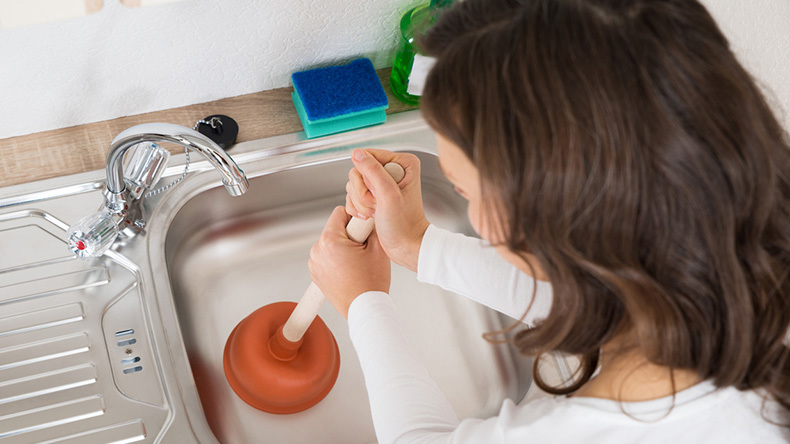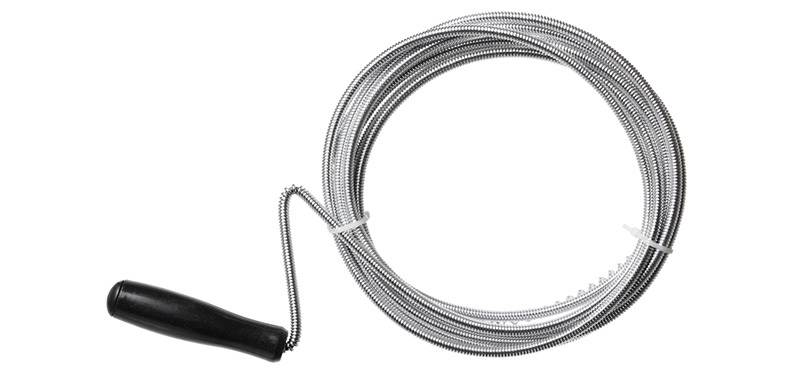The feeling of dread when the water won't drain from the kitchen sink is something many of us have encountered at some point. In this guide we will show you how to unblock your kitchen sink to get it draining as it should.
8 Methods To Unblock Your Kitchen Sink:
- Boiling water
- Baking soda & vinegar
- Salt & boiling water
- Plunger
- Drain cleaners
- Plumber's snake
- Coat hanger
- Check u-bend
Boiling Water
If your sink blockage is caused by grease or soap scum build up, boiling water is one of the easiest solutions.
Remove water
Before you do anything, remove as much of the standing water in the sink as possible using a mug or cup.
Pour boiling water down the drain
Boil a couple of litres of water in your kettle, then pour it directly down the drain.
Turn on the tap
Allow the boiling water to work its way down the drain, then turn on the tap. If the boiling water has melted the grease and soap scum, your drain should be working normally. If not, repeat the process one more time then move on to another method.

Baking Soda & Vinegar
Many people will turn to harsh chemicals when trying to unblock their drain, when natural products you already have around the house can be just as effective. Here’s how you can remove the blockage with baking soda and vinegar:
Remove standing water
Before attempting to remove the blockage, try and remove as much of the standing water from the sink as you can.
Pour baking soda down the drain
Next you’ll need to pour two teaspoons of baking soda down the drain.
Pour vinegar down the drain
Pour one cup or 250ml of white vinegar down the drain.
Cover the drain & wait
Now seal the drain opening with a plug or a wet cloth and allow the mixture to work for 15 minutes.
Pour hot water down the drain
You can now pour hot water down the drain to see if the mixture is working. If you've made some progress on the blockage, you can try again. If you're not getting anywhere with the blockage, try another method.

Salt & Boiling Water
Another natural method, salt and boiling water can also be used to shift blockages.
Pour the salt
Pour approximately 4 tablespoons of table salt down the drain.
Pour the boiling water
Next, pour the boiling water directly into the drain. Allow your mixture to work for a few minutes before turning on the hot tap to hopefully clear the blockage.
Plunger
Another common method of blockage removal is the good old plunger.
Fill the sink
First, fill your sink half full to cover the drain completely. If you have a double sink, seal off the drain you’re not working on with a plug or wet cloth.
Pump the plunger
Position your plunger over the drain and push it up and down several times.
Remove The Plunger
Remove the plunger to see if the water drains. If it doesn’t, you can try again then move onto another method.

Drain Cleaners
There are many different chemical drain cleaners available to you. If you’ve tried the methods above without any luck, this could be the next thing to try. As with any cleaner, we advise checking with the manufacturer to see if any chemicals could damage the finish of your kitchen sink.
Plumber's Snake
A plumber’s snake is a device you can buy which is threaded down your drain to dislodge a blockage and clear it.
Take your plumbers snake and carefully push it into the drain. You may need to twist it to help it navigate the U-bend.
When you get to the blockage, you’ll need to move the snake around until you’re able to dislodge and remove it. There’s no exact way of doing this but pushing, pulling and twisting the plumbers snake should help to unblock the sink.

Coat Hanger
A slightly low-tech solution, but if you don’t have a plumber’s snake you could also use a wire coat hanger. Once you’ve got your coat hanger apart, you can thread it through your drain using the same method as the snake.
We would suggest being very careful when using a coat hanger. As it hasn’t been designed for this purpose, it could scratch the surface of your sink.
Check The U-Bend
If you weren’t able to dislodge the blockage using your plumbers snake, you’ll need to directly access the pipes to take a look.
Locate the U-bend or trap under your sink. Place a bucket underneath it to catch any water and switch off your water supply by turning the stopcock clockwise.
There will be two compression fittings that hold the U-bend in place that you’ll need to unscrew to remove it. This can be done by hand but if they are particularly tight, you can use a wrench.
Once you’ve removed the U-bend, you should be able to look inside and see the blockage. You may need to use a piece of wire to remove it if it’s stuck.

Preventing Kitchen Sink Blockages:
If you want to keep your kitchen sink clear, there are a few common culprits of blockages that you should avoid putting down it:
- Grease, fats & oils
- Starchy foods such as pasta and rice
- Fruit peels
- Egg shells
- Coffee grounds
Dominic Lees-Bell, Kitchen Expert at Tap Warehouse advises “If you want to keep your kitchen sink clear, there are a few common culprits of blockages that you should avoid putting down it.
“You should never pour grease, oil, and fat down your sink as they don’t mix with water so if you are doing this often they will begin to build up over time. Another culprit for causing sink blockages is starchy foods like pasta and rice. The foods can never be broken down as they swell up when they come into contact with water.“ Other common offenders for sink blockages include fruit peels, egg shells, and coffee grounds. All of which can stick to your drain to cause a clog.”
That concludes our guide to unblocking your kitchen sink. If you want to keep your kitchen sink looking great, take a look at our guides to cleaning a stainless steel or granite sink.








